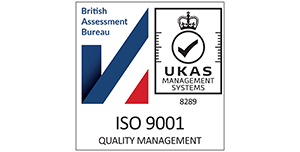Fatigue is one of the most persistent and underestimated risks in heavy industry. Long shifts, demanding physical labour, and irregular working patterns can take a toll on both mental and physical performance.
When workers are tired, their ability to make sound decisions or respond quickly to hazards declines dramatically, increasing the likelihood of costly and potentially life-threatening accidents.
Fatigue is not simply about feeling sleepy; it’s a state that affects focus, reaction time, and safety awareness.
Employers have a clear responsibility to manage these risks effectively. Doing so isn’t just about meeting regulatory requirements; it’s about safeguarding people and ensuring that every worker returns home safely.
Fatigue management should be viewed as a core component of workplace health and safety strategy, not a secondary consideration. When organisations take proactive steps to identify and reduce fatigue, they create safer, more efficient, and more sustainable working environments.
Understanding Fatigue in Industrial Settings
Fatigue arises when workers do not get sufficient rest or recovery time between shifts, or when the demands of the job exceed their physical and mental capacity.
Contributing factors include extended working hours, high workloads, monotonous tasks, and poor environmental conditions such as heat or noise.
Over time, fatigue builds up and can cause slower reflexes, poor concentration, and increased risk-taking behaviour — all of which are dangerous in heavy industry.
The consequences of unmanaged fatigue have been well-documented. Major industrial incidents across the world have been linked to tiredness and human error.
When concentration lapses, even briefly, the outcome can be devastating. Understanding fatigue as both a physiological and psychological state is the first step towards controlling it.
Once identified as a hazard, it can be measured, monitored, and managed like any other workplace risk.
The Impact of Shift Work
Shift work is essential in many industrial operations that run 24 hours a day, but it comes with inherent challenges.
Working irregular hours or overnight disrupts the body’s natural circadian rhythm, the internal clock that regulates sleep and wakefulness.
This disruption makes it harder for workers to achieve restorative sleep, even when off duty. Over time, sleep deprivation accumulates, leading to chronic fatigue, mood changes, and decreased alertness.
The effects of shift work extend beyond tiredness. Prolonged exposure to irregular sleep patterns has been associated with long-term health issues, including cardiovascular disease and digestive problems.
In a high-risk environment, a fatigued operator or driver can unintentionally endanger themselves and others. Employers must recognise these biological limitations and plan shift patterns that minimise disruption wherever possible.

Identifying Fatigue Risks on Site
Spotting the early signs of fatigue is vital in preventing incidents. Workers suffering from tiredness may appear distracted, forgetful, or unusually irritable.
They might take longer to perform routine tasks or show reduced awareness of hazards.
Supervisors should be trained to notice these behavioural changes and address them before they escalate into accidents or performance issues.
Creating a culture of openness is equally important. Workers need to feel comfortable admitting when they are too tired to operate safely, without fear of criticism or disciplinary action.
Regular well-being checks, open discussions, and anonymous reporting channels can all help identify fatigue risks. When employees know their concerns will be taken seriously, they are far more likely to speak up before problems arise.
Strategies to Manage and Reduce Fatigue
Practical fatigue management starts with better scheduling. Employers should design rotas that allow sufficient rest between shifts and avoid excessive overtime.
Encouraging regular breaks, limiting consecutive night shifts, and promoting rest days all contribute to improved alertness and wellbeing.
Physical factors on site — such as adequate lighting, ventilation, and hydration — can also play a significant role in keeping workers alert.
Leadership commitment is key. Managers set the tone for how safety is prioritised, and their actions influence how seriously workers take fatigue risks.
By promoting healthy habits and leading by example, management can reinforce the message that rest is a safety measure, not a luxury.
A well-rested workforce is more productive, efficient, and reliable, ultimately benefiting both safety and profitability.
Training and Education
Training is one of the most effective tools in combating fatigue. Workers should be taught to recognise the signs of tiredness in themselves and others, and to understand how lifestyle choices — such as diet, exercise, and sleep hygiene — affect their energy levels.
Embedding fatigue awareness into safety inductions ensures that everyone understands its impact from day one.
Supervisors and shift planners should also receive specialist training. They need the skills to allocate workloads fairly, monitor performance, and adjust shifts responsibly when fatigue risks arise.
Regular refresher sessions and toolbox talks help keep the topic visible and relevant, reinforcing a culture where fatigue management is treated with the same seriousness as any other safety issue.
Legal and Regulatory Considerations
In the UK, the Health and Safety at Work Act 1974 places a legal duty on employers to ensure, so far as is reasonably practicable, the health and safety of their employees. Fatigue management falls squarely within this responsibility.
The Working Time Regulations 1998 set limits on working hours and rest periods, while the Health and Safety Executive (HSE) provides detailed guidance on managing fatigue-related risks in safety-critical industries.
Failing to comply can have serious consequences. Beyond potential fines or prosecution, neglecting fatigue management damages morale, increases staff turnover, and undermines public trust.
By aligning fatigue control measures with HSE guidance and ensuring compliance through monitoring and audits, employers demonstrate both due diligence and a genuine commitment to worker welfare.

Monitoring and Continuous Improvement
Effective fatigue management is not a one-off initiative but an ongoing process. Employers should conduct regular fatigue risk assessments and use the findings to refine shift schedules and working practices.
Gathering feedback from employees can provide valuable insight into how policies perform in practice. Anonymous surveys and post-shift evaluations can help identify patterns or recurring issues.
Incident and near-miss data should also be reviewed to detect any links with fatigue. Over time, this information can guide continuous improvement and help establish a proactive safety culture.
Periodic policy reviews, supported by training updates, ensure that fatigue management keeps pace with operational changes and evolving best practice standards.
Conclusion
Fatigue and poorly managed shift work present significant challenges in heavy industry, but with the right strategies, they can be effectively controlled. Prioritising rest, education, and open communication helps create a safer, more efficient working environment.
Recognising fatigue as a core safety issue, rather than an individual weakness, is vital to maintaining both workforce wellbeing and operational reliability.
Ultimately, managing fatigue isn’t just about compliance; it’s about care. Employers who take a proactive approach to fatigue management protect their people, improve productivity, and strengthen their reputation as responsible operators.
Now is the time for every business to review its fatigue management systems and ensure that tiredness never becomes the cause of tragedy.











